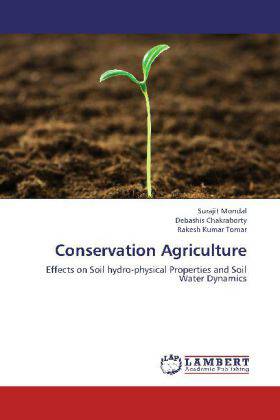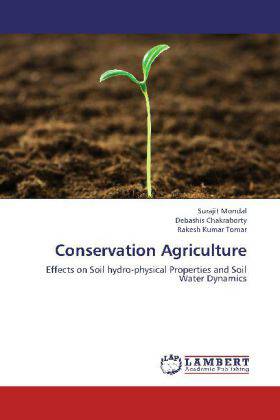
- Afhalen na 1 uur in een winkel met voorraad
- Gratis thuislevering in België vanaf € 30
- Ruim aanbod met 7 miljoen producten
- Afhalen na 1 uur in een winkel met voorraad
- Gratis thuislevering in België vanaf € 30
- Ruim aanbod met 7 miljoen producten
Zoeken
Conservation Agriculture
Surajit Mondal, Debashis Chakraborty, Rakesh Kumar Tomar
Paperback | Engels
€ 58,45
+ 116 punten
Omschrijving
Conservation tillage, a generic term denoting a range of tillage practices that reduce soil and water losses in comparison with conventional or plough-based tillage method and use of crop residue mulch to provide a protection against raindrop impact, enhance the soil aggrading processes and aggregate stability. Soil water conservation is the principal advantage of conservation tillage. Increase in water availability in the root zone improves biomass production and improves SOM content. It is due to the beneficial effects of soil fauna, mostly earthworms, that improves soil hydrologic properties and soil tilth. Reduced or no tillage systems are being advocated worldwide, due to their potential benefits on soil and water conservation, as well as requiring less fuel, equipment and labour. Use of no-till may reduce the cost of labor, fertilizers, pesticides, and machinery relative to conventional tillage.
Specificaties
Betrokkenen
- Auteur(s):
- Uitgeverij:
Inhoud
- Aantal bladzijden:
- 124
- Taal:
- Engels
Eigenschappen
- Productcode (EAN):
- 9783659240263
- Uitvoering:
- Paperback
- Afmetingen:
- 150 mm x 220 mm

Alleen bij Standaard Boekhandel
+ 116 punten op je klantenkaart van Standaard Boekhandel
Beoordelingen
We publiceren alleen reviews die voldoen aan de voorwaarden voor reviews. Bekijk onze voorwaarden voor reviews.








